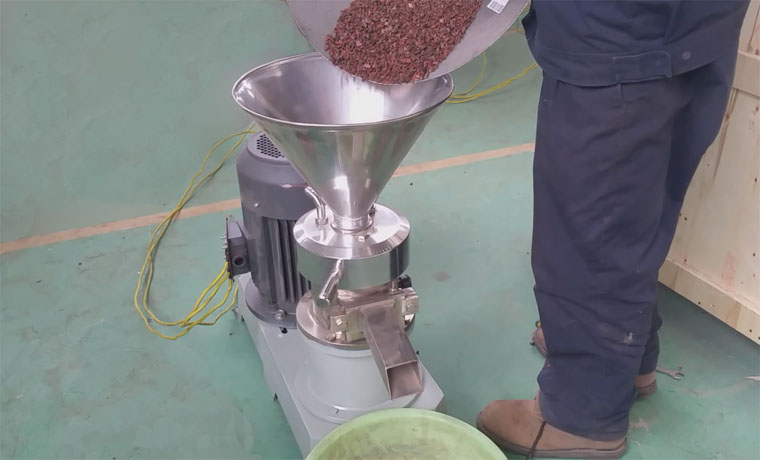How a Peanut Butter Grinding Machine Works
The peanut butter grinding machine is a precision designed machine for ultra-fine grinding of oily and soft materials. Unlike traditional grinders, this equipment utilizes advanced shear force technology and corrosion-resistant grinding heads to achieve a smooth, uniform texture that is ideal for food production. The industrial-grade model features a temperature control system that prevents overheating during continuous operation, thus preserving the natural flavor and nutritional value of the ingredients.

Best Materials for Peanut Butter Grinding Machines
These machines excel at processing foods with high oil content into spreads, pastes and sauces:
1. Nuts & seeds
Peanuts (traditional peanut butter), almonds (almond butter), sesame seeds (sesame paste), walnuts, cashews, pine nuts, sunflower seeds, pumpkin seeds and hazelnuts. The grinding device effectively breaks down their natural oils into a creamy consistency.
2. Cocoa & Coffee Products:
Cocoa beans (chocolate butter), roasted coffee beans (coffee butter) and coconut meat (coconut butter). The machine’s adjustable grinding plate controls the texture from creamy to crunchy.
3. Sauces & pastes
Fresh chili peppers (for hot sauce or chili paste), garlic (garam masala), ginger, chickpeas (hummus) and cooked beans (dry bean paste). Stainless steel construction prevents flavor cross-contamination.
4. Fruit/Vegetable Purees:
Soft fruits such as bananas, ripe apples or avocados can be processed into baby food or dessert bases.
Technical Specifications (Model KMGR-70 Peanut Butter Machine)
| Parameter | Specification |
|---|---|
| Power | 2.2 kW (3-phase industrial motor) |
| Capacity | 60–80 kg/h (varies by material density) |
| Grinding Finess | Adjustable from 0.1–5mm |
| Dimensions | 600×300×600mm (compact floor model) |
| Special Features | Water-cooled grinding chamber, FDA-grade stainless steel contact parts, overload protection |
Materials to Avoid in Peanut Butter Machines
Grinding should be avoided to prevent equipment damage or poor results:
1. Hard, low-oil materials:
Unprocessed grains (wheat, rice), dry legumes, sugar cane or coffee beans (unless pre-roasted and rich in oil). These substances can prematurely wear out the pads.
2. Moisture-rich/frozen items:
Ice cubes, frozen fruit, or fresh vegetables with high water content (e.g., cucumbers) may cause slippage or motor strain.
3. Fibrous or sticky materials:
Coconut shells, raw celery or pineapple cores may jam the grinding device.
Pro Tips for Selecting Materials
- Pretreatment is important: Toasting nuts/seeds improves oil release for smoother grinding.
- Test small batches: For unfamiliar ingredients, use 1-2 kg samples for trial runs.
- Consult the manufacturer: If you plan to grind unconventional ingredients (e.g. shea nuts), contact an equipment supplier like us for customized advice.

